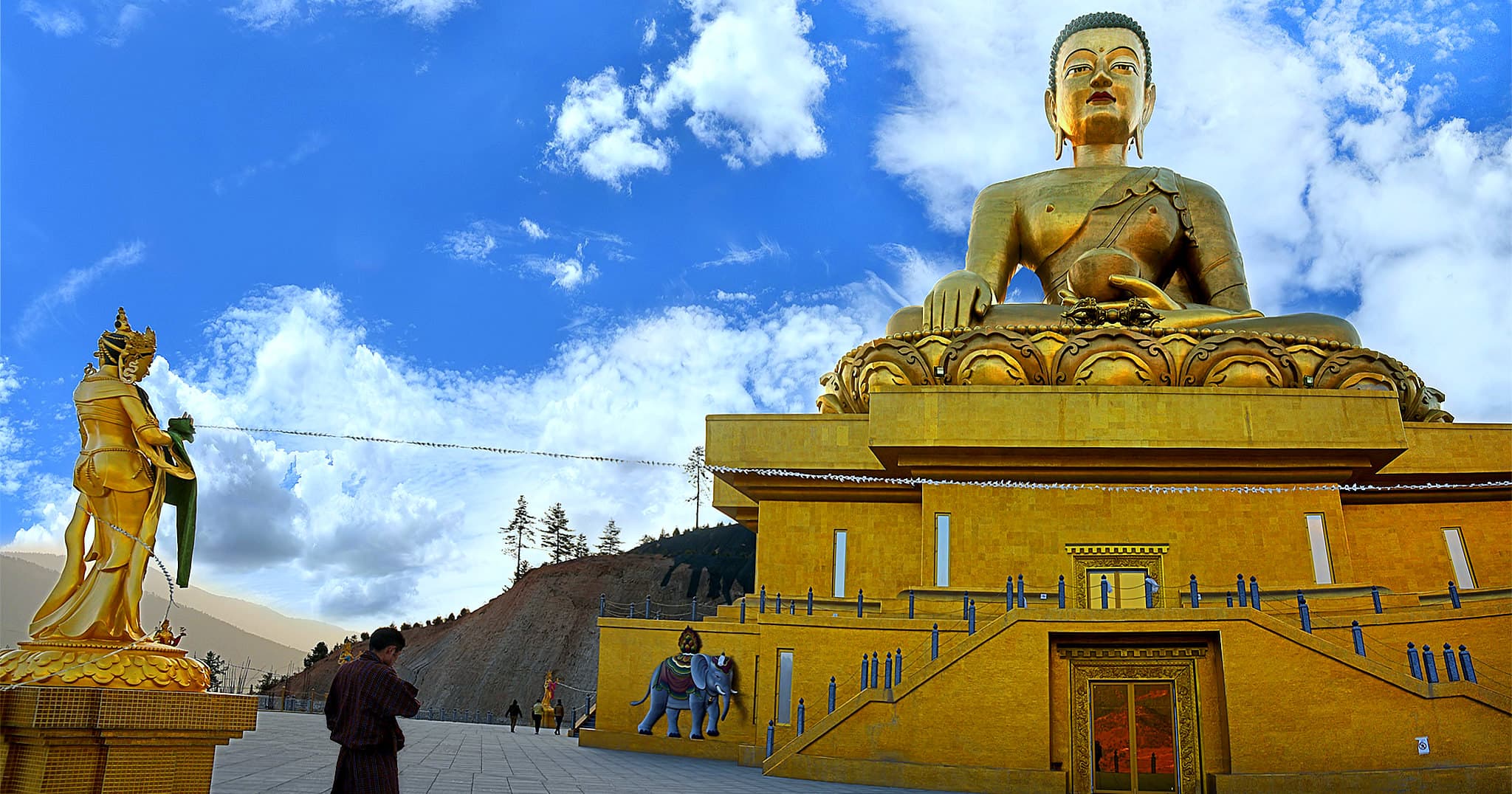Discover the Top 10 places to visit in Bhutan, showcasing the best tourist attractions in Bhutan. From the iconic Paro Taktsang Tiger's Nest Monastery to the serene Phobjikha Valley Gangtey Monastery, this Bhutan travel guide covers all the must-see destinations in Bhutan. Explore the rich culture, stunning landscapes, and historic sites that make Bhutan one of the most unique travel destinations in the world. Whether you're interested in Thimphu city attractions, Bumthang Valley tourism, or the hidden charm of Haa Valley Bhutan, this curated list of Bhutan travel destinations ensures an unforgettable journey.
For exploring the Top 10 places to visit in Bhutan, Amen Bhutan Tours and Treks is the best company. Our expert guides and meticulously crafted itineraries ensure you experience the best tourist attractions in Bhutan, from the iconic Paro Taktsang Tiger's Nest Monastery to the serene Phobjikha Valley Gangtey Monastery. Discover the rich culture, stunning landscapes, and historic sites that make Bhutan a unique travel destination. Whether you're interested in Thimphu city attractions, Bumthang Valley tourism, or the hidden charm of Haa Valley Bhutan, Amen Bhutan Tours and Treks guarantees an unforgettable journey through all the must-see destinations in Bhutan.
Paro Taktsang (Tiger's Nest Monastery)
Paro Taktsang, also known as the Tiger's Nest Monastery, is one of the most iconic and revered sites in Bhutan. Perched dramatically on a cliffside approximately 900 meters above the Paro Valley, this sacred monastery offers breathtaking views and a profound spiritual experience.
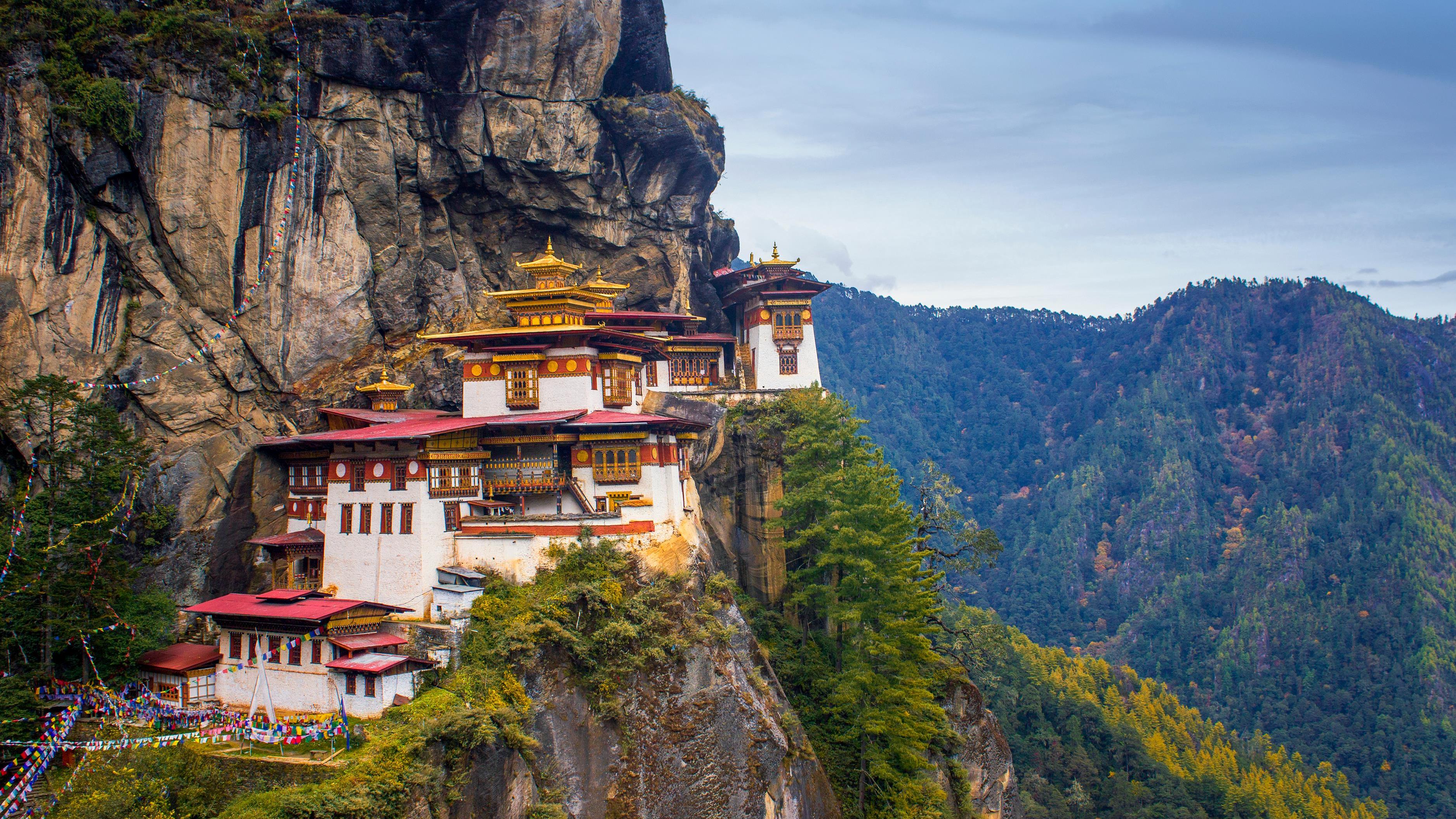
Highlights
- Stunning Location: The Paro Taktsang Tiger's Nest Monastery is built into the side of a sheer cliff, making it one of the most visually striking sites in Bhutan. The journey to the monastery itself is an adventure, involving a steep hike through pine forests and past a waterfall.
- Spiritual Significance: This monastery is one of the most important pilgrimage sites in Bhutan. According to legend, Guru Padmasambhava (Guru Rinpoche) flew to this location on the back of a tigress and meditated in a cave, thus sanctifying the place.
- Architectural Marvel: The monastery complex consists of four main temples and several residential buildings, all interconnected by staircases carved into the rock. The buildings cling to the cliffs, demonstrating impressive engineering and architectural skills.
- Breathtaking Views: From the monastery, visitors can enjoy panoramic views of the Paro Valley below. The sight of the monastery itself against the backdrop of the valley and mountains is truly awe-inspiring.
- Cultural Experience: Visiting the Tiger's Nest Monastery offers a deep dive into Bhutanese culture and spirituality. The serene environment and the presence of monks in prayer create an atmosphere of tranquility and devotion.
Visiting Tips
- Best Time to Visit: The best time to visit the Tiger's Nest Monastery is during the spring (March to May) and autumn (September to November) when the weather is mild, and the skies are clear.
- Preparation: The hike to the monastery can be challenging, so it's essential to be prepared. Wear comfortable hiking shoes, bring water, and pace yourself. There are also rest stops along the way where you can take a break and enjoy the scenery.
- Respectful Conduct: As a sacred site, visitors should dress modestly and behave respectfully. Photography inside the monastery is not allowed, but you can take pictures of the stunning exterior and the surrounding views.
Paro Taktsang (Tiger's Nest Monastery) is a must-visit destination for anyone traveling to Bhutan. Its unique location, spiritual significance, and breathtaking beauty make it one of the best tourist attractions in Bhutan and a highlight of any Bhutan travel guide. Whether you're seeking adventure, spiritual enlightenment, or simply a glimpse of Bhutan's stunning landscapes, the Tiger's Nest Monastery is an unforgettable experience.
Punakha Dzong
Punakha Dzong is one of the most stunning and historically significant fortresses in Bhutan, located at the confluence of the Pho Chhu (male) and Mo Chhu (female) rivers. As one of the best-preserved dzongs in Bhutan, it holds immense cultural and architectural importance, making it one of the best tourist attractions in Bhutan.

Highlights
- Architectural Splendor: Punakha Dzong is renowned for its impressive Bhutanese architecture. The dzong features intricate woodwork, massive courtyards, and towering whitewashed walls adorned with beautiful murals and carvings. Its grandeur is accentuated during the Punakha Tshechu, an annual festival that showcases traditional mask dances and religious rituals.
- Historical Significance: Built in 1637 by Zhabdrung Ngawang Namgyal, the dzong served as the administrative center and seat of the government until the capital moved to Thimphu in 1955. It is also the site where the first King of Bhutan was crowned in 1907, making it a vital part of Bhutan's history.
- Spiritual Importance: Punakha Dzong houses sacred relics of the southern Drukpa Kagyu school, including the remains of Zhabdrung Ngawang Namgyal. It is also the winter residence of the Je Khenpo (Chief Abbot) and the central monastic body, reflecting its ongoing religious significance.
- Picturesque Setting: The dzong's location at the confluence of two rivers, against a backdrop of lush green hills and the distant Himalayas, makes it one of the most scenic places in Bhutan. The sight of the dzong reflected in the tranquil waters of the rivers is truly mesmerizing.
- Photographic Opportunities: The beautiful Punakha Suspension Bridge, which is one of the longest in Bhutan, offers stunning views of the dzong and the surrounding landscape. The dzong itself is a favorite spot for photographers, especially during the spring when the jacaranda trees are in full bloom, adding a splash of purple to the scenery.
Visiting Tips
- Best Time to Visit: The best time to visit Punakha Dzong is during the spring (March to May) when the weather is pleasant, and the jacaranda trees are in bloom, or during the autumn (September to November) when the skies are clear and the temperatures are moderate.
- Dress Code: As a religious site, visitors should dress modestly. It is customary to remove shoes before entering the inner courtyards and temples. Wearing long sleeves and trousers or skirts that cover the knees is recommended.
- Festival Experience: If possible, plan your visit to coincide with the Punakha Tshechu, which usually takes place in February or March. This vibrant festival offers a unique opportunity to witness Bhutanese culture and traditions up close.
Punakha Dzong is a must-visit destination for anyone exploring Bhutan. Its stunning architecture, rich history, and spiritual significance make it one of the must-see destinations in Bhutan. Whether you're interested in Bhutan monasteries and dzongs, historic sites in Bhutan, or simply want to experience one of the most scenic places in Bhutan, Punakha Dzong will leave a lasting impression.
Thimphu
Thimphu, the capital city of Bhutan, seamlessly blends tradition and modernity, offering a unique glimpse into the heart of Bhutanese culture. As the largest city in Bhutan, Thimphu is home to a variety of attractions, making it one of the best tourist attractions in Bhutan. From ancient monasteries to contemporary landmarks, Thimphu city attractions cater to all interests.
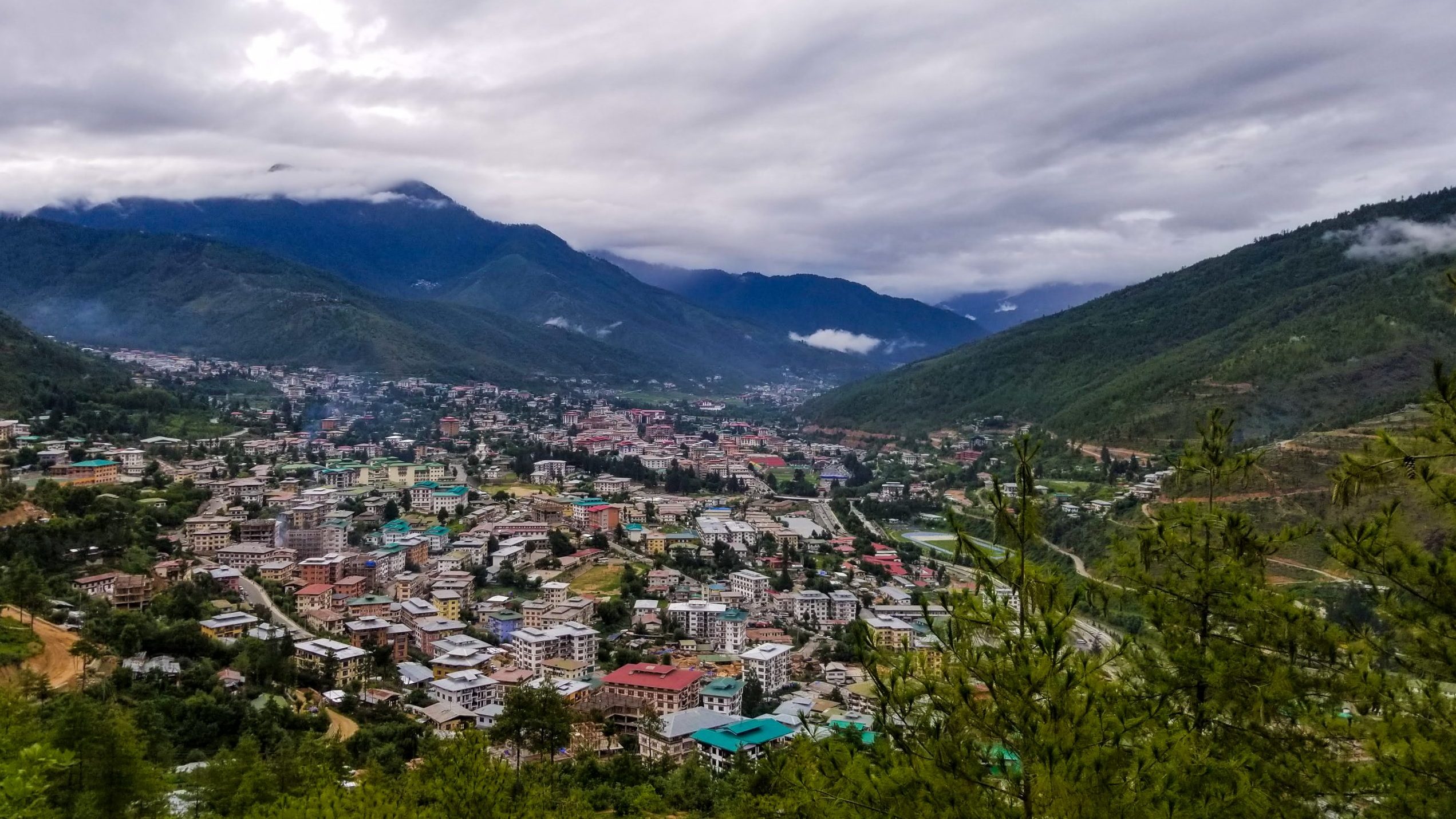
Highlights
- Tashichho Dzong: This impressive fortress-monastery is the seat of the Bhutanese government and houses the throne room and offices of the King. Tashichho Dzong, with its stunning architecture and beautiful gardens, is a must-visit for those interested in historic sites in Bhutan.
- Buddha Dordenma Statue: Standing at 51.5 meters tall, the Buddha Dordenma Statue is one of the largest statues of Buddha in the world. Located on a hilltop overlooking Thimphu, it offers panoramic views of the city and the surrounding mountains, making it a prime spot for photography and contemplation.
- National Memorial Chorten: Built in memory of the third King of Bhutan, Jigme Dorji Wangchuck, the National Memorial Chorten is a revered religious site. Locals and visitors alike come here to circumambulate the chorten and spin the prayer wheels, seeking blessings and peace.
- Changangkha Lhakhang: This 12th-century monastery, perched on a hilltop, is one of the oldest temples in Thimphu. It is a popular pilgrimage site for Bhutanese parents who bring their newborns here for blessings and names.
- Thimphu Weekend Market: For a taste of local life, visit the Thimphu Weekend Market. This bustling market offers a wide array of products, from fresh produce to traditional handicrafts, providing a vibrant insight into Bhutanese culture and commerce.
- Folk Heritage Museum: To delve deeper into Bhutanese traditions, the Folk Heritage Museum is an excellent destination. It showcases rural life through exhibits and artifacts, including a restored traditional Bhutanese farmhouse.
- Royal Textile Academy: As Bhutan is renowned for its intricate textiles, a visit to the Royal Textile Academy is highly recommended. Here, you can learn about the rich textile heritage of Bhutan, see live weaving demonstrations, and admire exquisite fabric creations.
- Clock Tower Square: This central plaza is a popular gathering spot for locals and visitors. It is surrounded by shops, cafes, and restaurants, making it a great place to relax and soak in the city's atmosphere.
Visiting Tips
- Best Time to Visit: The best time to visit Thimphu is during the spring (March to May) and autumn (September to November) when the weather is pleasant and several festivals take place, including the vibrant Thimphu Tshechu.
- Cultural Etiquette: When visiting religious sites, dress modestly and behave respectfully. It is customary to remove your shoes before entering temples and dzongs.
- Local Cuisine: Don’t miss the chance to try Bhutanese cuisine in Thimphu. Popular dishes include Ema Datshi (chili cheese), Phaksha Paa (pork with red chilies), and Momos (dumplings).
Thimphu is a city that beautifully showcases the harmony between Bhutan's ancient traditions and modern advancements. With its array of Thimphu city attractions, rich cultural experiences, and vibrant local life, it is a key highlight in any Bhutan travel guide. Whether you're interested in Bhutan monasteries and dzongs, historic sites in Bhutan, or exploring the urban charm of the capital, Thimphu has something for everyone.
Bumthang Valley
The Bumthang Valley, often referred to as the spiritual heartland of Bhutan, is a region rich in ancient temples, monasteries, and cultural heritage. Comprising four main valleys—Chokhor, Tang, Ura, and Chhume—Bumthang is a must-visit for those seeking to explore the spiritual and cultural essence of Bhutan. As one of the best tourist attractions in Bhutan, Bumthang offers a unique and immersive experience for travelers.
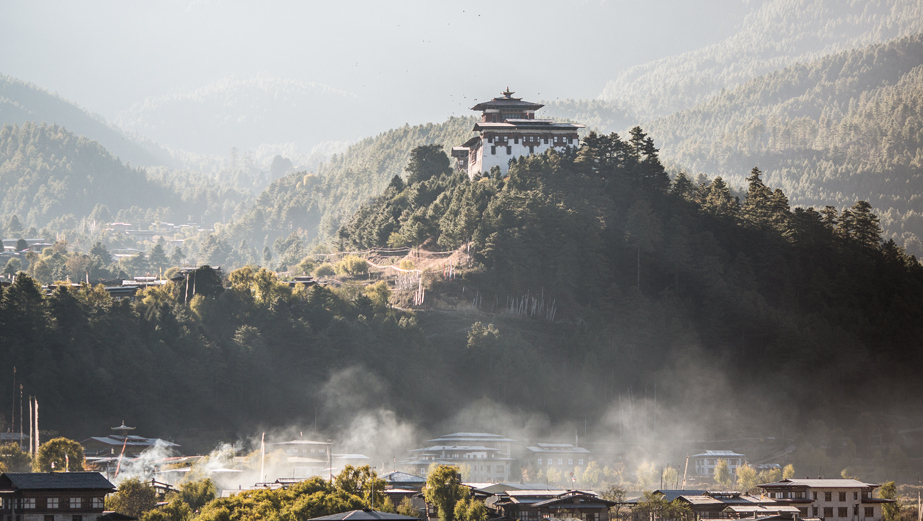
Highlights
- Jambay Lhakhang: Built in the 7th century by the Tibetan King Songtsen Gampo, Jambay Lhakhang is one of the oldest temples in Bhutan. It hosts the annual Jambay Lhakhang Drup, a vibrant festival featuring traditional mask dances and fire rituals.
- Kurje Lhakhang: This sacred site is where Guru Rinpoche meditated and left an imprint of his body on a rock, hence the name Kurje (body imprint). The monastery complex consists of three main temples, each representing different periods of Bhutanese history.
- Tamshing Lhakhang: Founded in 1501 by the famous saint Pema Lingpa, Tamshing Lhakhang is known for its ancient wall paintings and as a center for the Nyingma school of Buddhism. Visitors can experience the traditional practice of circumambulating the temple while wearing iron chains, a ritual believed to purify sins.
- Jakar Dzong: Also known as the "Castle of the White Bird," Jakar Dzong is perched on a hill overlooking the Chokhor Valley. It serves as the administrative center of Bumthang and offers stunning views of the surrounding landscapes.
- Mebar Tsho (Burning Lake): This sacred lake is associated with the legendary treasure hunter Pema Lingpa. According to legend, he discovered hidden treasures here by diving into the lake with a burning butter lamp, which emerged still burning. It is a popular pilgrimage site for Bhutanese and visitors alike.
- Ura Valley: The picturesque Ura Valley is known for its traditional stone houses and beautiful landscapes. The annual Ura Yakchoe festival, celebrated with traditional dances and rituals, is a highlight for visitors.
- Tang Valley: This remote valley is home to the Ogyen Choling Palace Museum, which offers insights into the lifestyle and culture of Bhutanese nobility. The Tang Valley is also known for its scenic beauty and opportunities for trekking.
- Red Panda Brewery: For a unique experience, visit the Red Panda Brewery in Bumthang, Bhutan's first and only brewery. You can sample locally brewed beer and learn about the brewing process.
- Swiss Farm: Established by a Swiss expatriate, the Swiss Farm produces a variety of local cheeses, honey, and apple products. It’s a great place to taste and purchase unique Bhutanese delicacies.
- Handicrafts and Textiles: Bumthang is renowned for its traditional woolen products, known as Yathra. Visit local weavers and shops to see the vibrant textiles being made and to purchase beautiful handmade items.
Visiting Tips
- Best Time to Visit: The best time to visit Bumthang is during the spring (March to May) and autumn (September to November) when the weather is mild and festivals are held.
- Cultural Etiquette: Dress modestly and behave respectfully when visiting temples and monasteries. It is customary to remove shoes before entering sacred sites.
- Accommodations: Bumthang offers a range of accommodations, from traditional guesthouses to more modern hotels. Staying in a local guesthouse can provide a more authentic experience.
The Bumthang Valley is a treasure trove of spiritual and cultural experiences, making it one of the must-see destinations in Bhutan. With its ancient monasteries, vibrant festivals, and stunning landscapes, Bumthang provides a deep and enriching exploration of Bhutanese heritage. Whether you're interested in Bhutan monasteries and dzongs, historic sites in Bhutan, or the tranquil beauty of Bhutan's valleys, Bumthang is an essential stop on your journey.
Phobjikha Valley (Gangtey)
The Phobjikha Valley, also known as the Gangtey Valley, is a glacial valley in Bhutan that is renowned for its breathtaking natural beauty and rich biodiversity. Nestled in the Black Mountains, this serene valley is one of the most picturesque and ecologically important areas in Bhutan, making it one of the best tourist attractions in Bhutan.
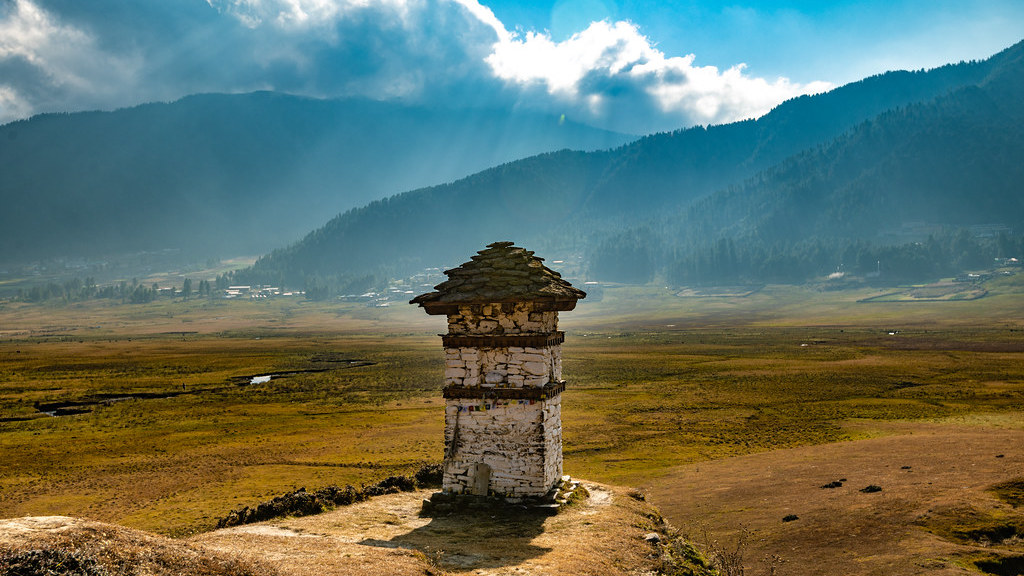
Highlights
- Gangtey Monastery: The Gangtey Monastery, also known as Gangtey Goenpa, is one of the main centers of the Nyingma school of Buddhism in Bhutan. Founded in the 17th century, the monastery offers stunning views of the valley and serves as an important religious and cultural site.
- Black-Necked Cranes: Every winter, the Phobjikha Valley becomes the winter home for the endangered black-necked cranes that migrate from Tibet. These majestic birds are revered by the local people and are a key attraction for bird watchers and nature enthusiasts.
- Nature Trails: The valley offers several scenic hiking trails, including the popular Gangtey Nature Trail. This easy hike takes you through pine forests, small villages, and open meadows, offering beautiful views of the valley and opportunities to observe local wildlife.
- Cultural Experiences: The Phobjikha Valley is home to traditional Bhutanese villages where visitors can experience rural Bhutanese life. The valley's inhabitants are known for their warm hospitality and traditional crafts, such as weaving and wood carving.
- Conservation Efforts: The Phobjikha Valley is a prime example of successful conservation efforts in Bhutan. The Royal Society for Protection of Nature (RSPN) has been actively involved in preserving the valley's natural environment and promoting sustainable tourism.
- Photography: The valley's dramatic landscapes, with its rolling hills, lush meadows, and traditional farmhouses, make it a paradise for photographers. The sight of the black-necked cranes in the valley's marshlands is a particularly captivating scene.
Visiting Tips
- Best Time to Visit: The best time to visit the Phobjikha Valley is from October to March, when the black-necked cranes are present. However, the valley is beautiful year-round, with lush greenery in the summer and clear skies in the autumn.
- Warm Clothing: The Phobjikha Valley is at a high altitude, and temperatures can be quite cold, especially in the winter months. Be sure to bring warm clothing and be prepared for chilly weather.
- Respect Wildlife: When visiting the valley, it's important to respect the wildlife, particularly the black-necked cranes. Keep a safe distance and avoid disturbing their natural habitat.
The Phobjikha Valley (Gangtey) is a destination that beautifully showcases the harmony between nature and culture in Bhutan. With its stunning landscapes, rich biodiversity, and deep cultural heritage, it is one of the must-see destinations in Bhutan. Whether you're interested in Bhutan nature and wildlife, exploring the Gangtey Monastery, or simply enjoying the tranquility of this pristine valley, Phobjikha offers an unforgettable experience.
Haa Valley
The Haa Valley, one of Bhutan's most picturesque and least-visited regions, offers a serene and tranquil escape into nature and tradition. Nestled in the western part of Bhutan, close to the border with Tibet, the valley is a hidden gem, rich in history, culture, and natural beauty. As one of the best tourist attractions in Bhutan, Haa Valley is a must-visit for those seeking to experience the country's unspoiled landscapes and traditional way of life.
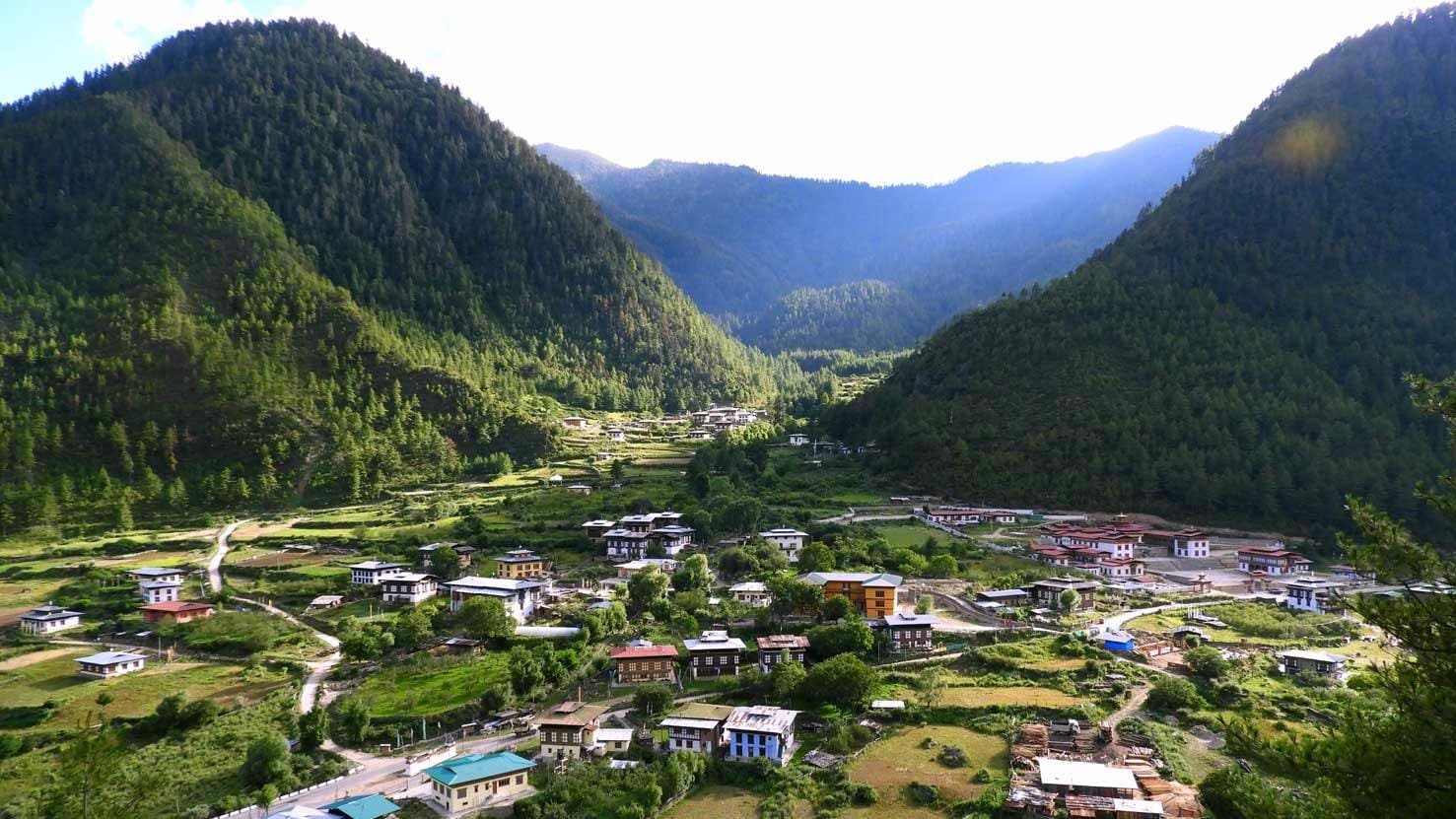
Highlights
- Lhakhang Karpo (White Temple): The Lhakhang Karpo, or White Temple, is one of the two main temples in the Haa Valley. It is known for its beautiful architecture and serene atmosphere. According to legend, the temple was built on the site where a white pigeon landed, signifying a sacred location.
- Lhakhang Nagpo (Black Temple): The Lhakhang Nagpo, or Black Temple, complements its white counterpart. This temple is built on the site where a black pigeon landed. Together, these temples symbolize the harmonious balance between good and evil.
- Chele La Pass: At 3,988 meters, Chele La Pass is one of the highest motorable passes in Bhutan and offers stunning panoramic views of the Haa Valley on one side and the Paro Valley on the other. The pass is a popular spot for hiking and photography.
- Traditional Villages: The Haa Valley is dotted with traditional Bhutanese villages that offer a glimpse into the country’s rural lifestyle. These villages are known for their traditional architecture, vibrant festivals, and warm hospitality.
- Haa Summer Festival: This annual festival showcases the unique culture, traditions, and lifestyle of the nomadic herders of Haa. The festival features traditional sports, Bhutanese cuisine, and cultural performances, providing an immersive cultural experience.
- Natural Beauty: The Haa Valley is surrounded by dense forests, alpine meadows, and pristine rivers. It’s an ideal destination for nature lovers and those looking to enjoy activities such as hiking, bird watching, and meditation.
- Military Presence: The Haa Valley is home to the Indian Army's IMTRAT (Indian Military Training Team), adding a unique aspect to its cultural landscape. The presence of the military has helped maintain the region's tranquility and natural beauty.
Visiting Tips
- Best Time to Visit: The best time to visit the Haa Valley is from late spring to early autumn (May to October). During these months, the weather is pleasant, and the valley is lush and green. The Haa Summer Festival in July is also a great time to experience local culture.
- Travel Essentials: Due to its remote location, it's advisable to bring necessary supplies, including warm clothing, especially if visiting during the cooler months. Comfortable hiking shoes are recommended for exploring the valley's natural trails.
- Respect Local Customs: Visitors should respect local customs and traditions. When visiting temples and interacting with locals, dress modestly and behave respectfully.
The Haa Valley is a pristine and tranquil destination that offers a unique blend of natural beauty and cultural richness. As one of the must-see destinations in Bhutan, it provides a perfect escape for those seeking to experience the country's traditional way of life away from the more frequented tourist spots. Whether you're interested in the spiritual significance of the Lhakhang Karpo and Lhakhang Nagpo, the breathtaking views from Chele La Pass, or the vibrant local culture, the Haa Valley is a hidden gem worth exploring.
Dochula Pass
Dochula Pass is one of Bhutan's most stunning and accessible mountain passes, located on the road between Thimphu and Punakha. At an altitude of 3,100 meters, it offers breathtaking panoramic views of the Himalayan mountain range. This pass is not only a scenic viewpoint but also a place of spiritual significance, making it one of the best tourist attractions in Bhutan.
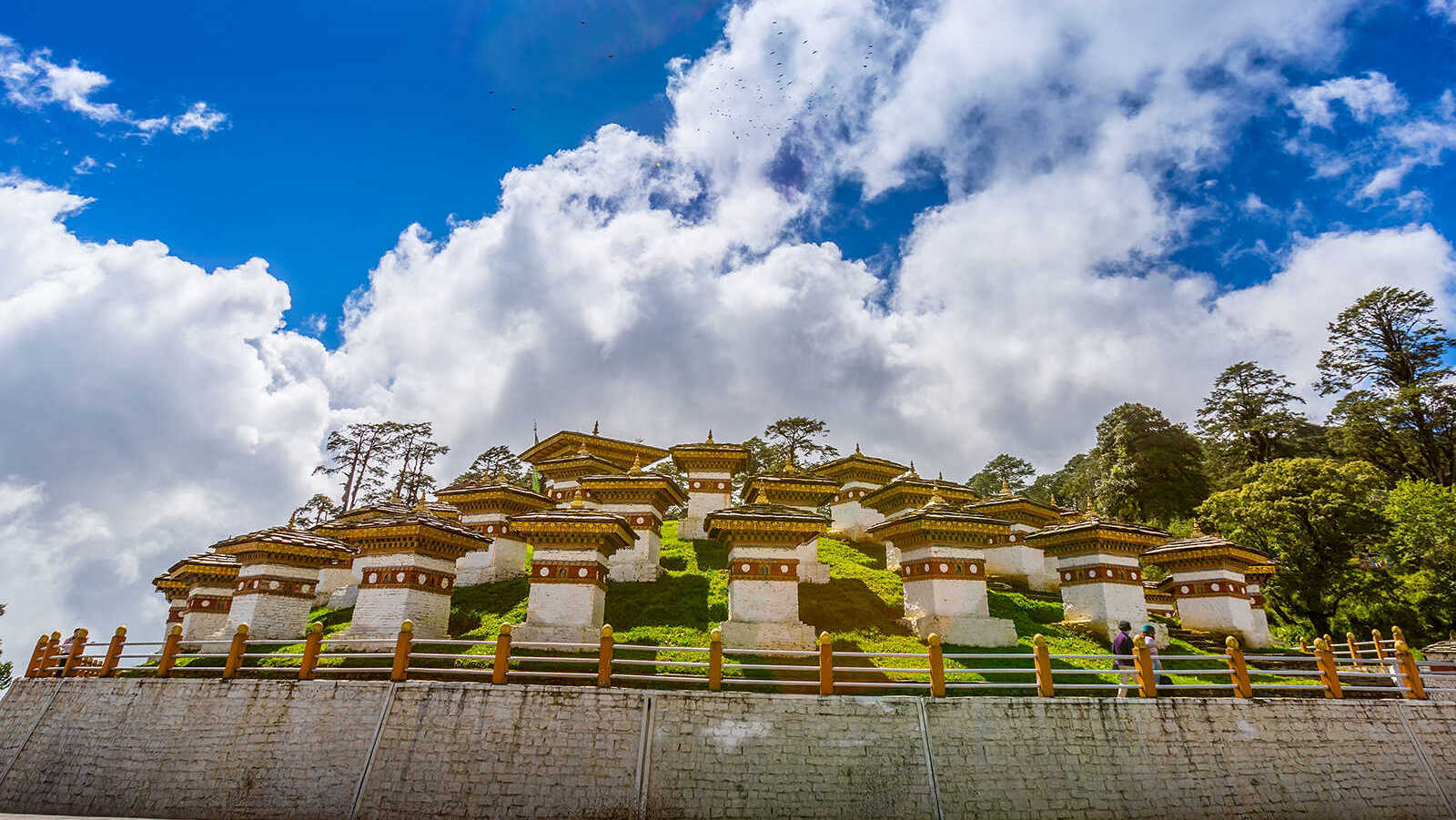
Highlights
- Druk Wangyal Chortens: The pass is adorned with 108 memorial chortens, known as the Druk Wangyal Chortens, which were built in honor of Bhutanese soldiers who died in the 2003 military operations against insurgents. These chortens are beautifully arranged in concentric circles, creating a serene and sacred atmosphere.
- Dochula Druk Wangyel Festival: Held annually in December, this festival celebrates Bhutanese culture and military triumphs. It features traditional mask dances and cultural performances against the backdrop of the stunning Himalayan peaks.
- Panoramic Views: On clear days, visitors can enjoy spectacular views of the snow-capped Himalayas, including some of Bhutan’s highest peaks such as Gangkar Puensum. The sight of the mountains rising majestically above the clouds is truly awe-inspiring.
- Dochula Nature Trail: For nature lovers, the Dochula Nature Trail offers a peaceful hike through lush forests, providing opportunities to spot various bird species and enjoy the natural beauty of the region. The trail is relatively easy and suitable for all fitness levels.
- Druk Wangyal Lhakhang: This temple, located near the chortens, is a stunning example of Bhutanese architecture and artwork. It was built to honor the Fourth Druk Gyalpo and the soldiers who participated in the 2003 military operations. The temple's intricate murals and serene environment make it a worthwhile visit.
- Picnic Spot: The pass is a popular spot for locals and tourists alike to stop for a picnic. With its cool climate and beautiful surroundings, it’s an ideal place to relax and enjoy the tranquility of the mountains.
Visiting Tips
- Best Time to Visit: The best time to visit Dochula Pass is during the clear months of October to February when the views of the Himalayas are most likely to be unobstructed. However, the pass is beautiful year-round, with blooming rhododendrons in the spring and lush greenery in the summer.
- Weather Preparedness: Due to its high altitude, Dochula Pass can be quite chilly, especially in the early morning and late afternoon. It’s advisable to bring warm clothing, regardless of the season.
- Cultural Etiquette: When visiting the chortens and temples, dress modestly and behave respectfully. It’s customary to walk clockwise around the chortens and spin the prayer wheels as a sign of respect.
Dochula Pass is a destination that offers a perfect blend of natural beauty and spiritual significance. As one of the must-see destinations in Bhutan, it provides visitors with an opportunity to experience the grandeur of the Himalayas, the tranquility of the memorial chortens, and the rich cultural heritage of Bhutan. Whether you're captivated by the panoramic mountain views, the spiritual ambiance of the Druk Wangyal Chortens, or the peaceful nature trails, Dochula Pass is a highlight of any Bhutan travel itinerary.
Jakar
Jakar, often referred to as the "Little Switzerland of Bhutan," is a charming town located in the heart of the Bumthang Valley. Known for its scenic beauty, historic sites, and spiritual significance, Jakar is a must-visit destination for anyone exploring Bhutan. As one of the best tourist attractions in Bhutan, Jakar offers a blend of culture, history, and natural beauty.
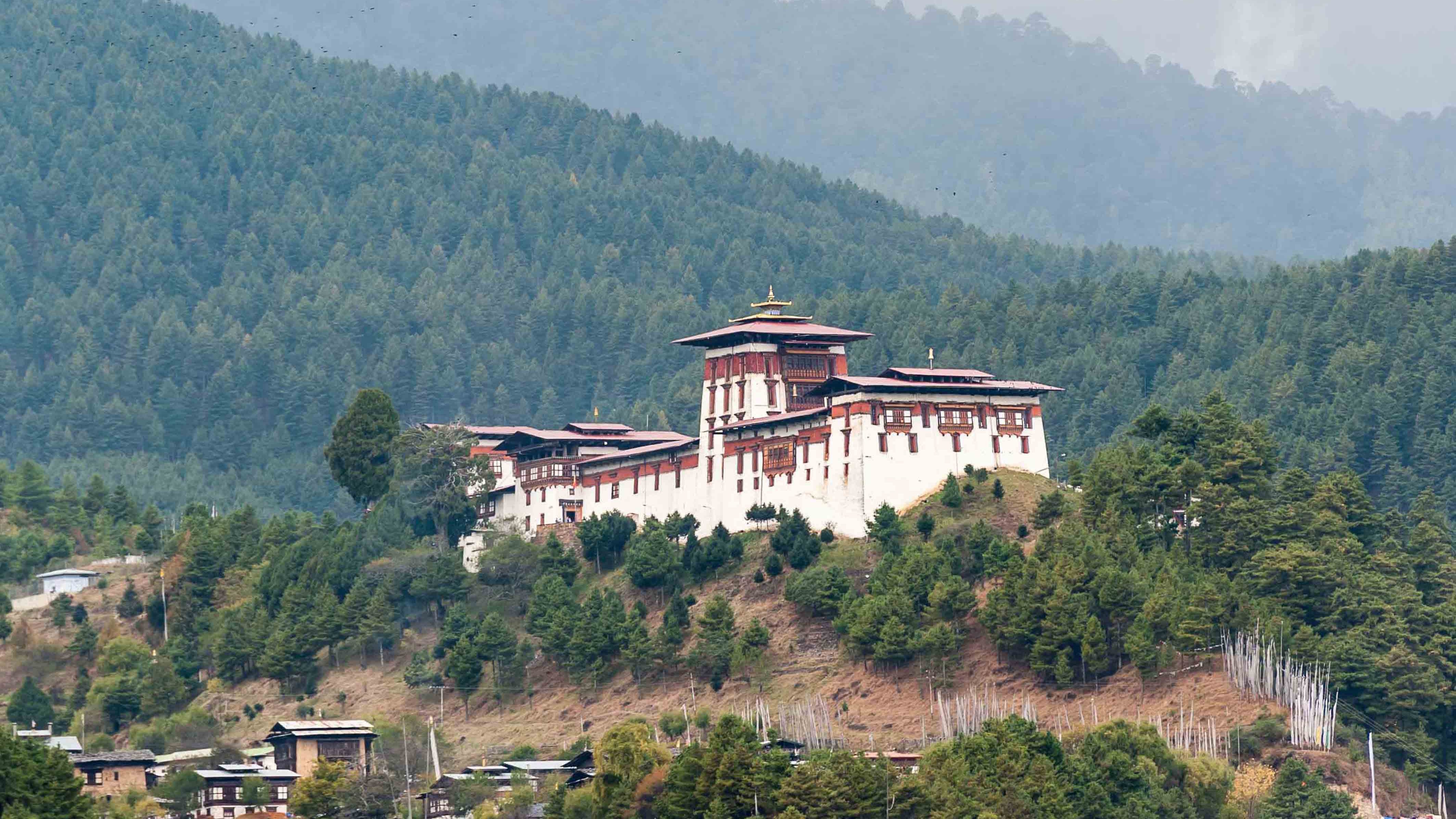
Highlights
- Jakar Dzong: Also known as the "Castle of the White Bird," Jakar Dzong is perched on a ridge overlooking the Chokhor Valley. Built in 1549, this impressive fortress serves as the administrative center of Bumthang and offers stunning views of the surrounding landscape. The dzong's architecture and historical significance make it a key attraction for visitors interested in historic sites in Bhutan.
- Kurje Lhakhang: One of the most sacred monasteries in Bhutan, Kurje Lhakhang is believed to house the body imprint of Guru Rinpoche, who is credited with bringing Buddhism to Bhutan. The complex consists of three temples, each representing different periods of Bhutanese history, and is a major pilgrimage site for Buddhists.
- Jambay Lhakhang: Built in the 7th century by the Tibetan King Songtsen Gampo, Jambay Lhakhang is one of the oldest temples in Bhutan. It is renowned for its annual Jambay Lhakhang Drup festival, which features traditional mask dances and rituals, including the fire ceremony known as Mewang.
- Mebar Tsho (Burning Lake): This sacred lake is associated with the legendary treasure hunter Pema Lingpa. According to legend, he discovered hidden treasures here by diving into the lake with a burning butter lamp, which emerged still burning. Mebar Tsho is a popular pilgrimage site and a beautiful spot for reflection and meditation.
- Tamshing Lhakhang: Founded in 1501 by the famous saint Pema Lingpa, Tamshing Lhakhang is known for its ancient wall paintings and traditional Buddhist practices. Visitors can experience the unique ritual of circumambulating the temple while wearing iron chains, believed to purify sins.
- Swiss Farm: Established by a Swiss expatriate, the Swiss Farm produces a variety of local cheeses, honey, and apple products. It's a great place to taste and purchase unique Bhutanese delicacies, providing a delightful culinary experience.
- Handicrafts and Textiles: Jakar is renowned for its traditional woolen products, known as Yathra. Visitors can explore local weaving centers and shops to see the vibrant textiles being made and to purchase beautiful handmade items.
Visiting Tips
- Best Time to Visit: The best time to visit Jakar is during the spring (March to May) and autumn (September to November) when the weather is mild, and the landscape is at its most beautiful. These seasons also coincide with several local festivals.
- Cultural Etiquette: When visiting temples and monasteries, dress modestly and behave respectfully. It is customary to remove shoes before entering sacred sites and to walk clockwise around temples and prayer wheels.
- Accommodations: Jakar offers a range of accommodations, from traditional guesthouses to more modern hotels. Staying in a local guesthouse can provide a more authentic experience and closer interaction with the local culture.
Jakar is a destination that beautifully encapsulates the essence of Bhutan's rich cultural heritage and natural beauty. As one of the must-see destinations in Bhutan, it offers visitors a chance to explore ancient monasteries, enjoy stunning landscapes, and immerse themselves in the local way of life. Whether you're interested in Bhutan monasteries and dzongs, historic sites in Bhutan, or the tranquil beauty of the Bumthang Valley, Jakar is an essential stop on your Bhutanese journey.
Paro
Paro is one of the most scenic and historically significant towns in Bhutan, located in the western part of the country. This charming town is the gateway to some of Bhutan's most iconic landmarks and cultural sites, making it one of the best tourist attractions in Bhutan. Known for its picturesque landscapes, ancient monasteries, and traditional architecture, Paro offers a rich and immersive experience for visitors.

Highlights
- Paro Taktsang (Tiger's Nest Monastery): The Paro Taktsang Tiger's Nest Monastery is arguably the most famous and breathtaking site in Bhutan. Perched on a cliffside about 900 meters above the Paro Valley, this sacred monastery is a must-visit for its spiritual significance and stunning views. The challenging hike to the monastery adds to the adventure, making it one of the must-see destinations in Bhutan.
- Rinpung Dzong: Also known as the "Fortress of the Heap of Jewels," Rinpung Dzong is a magnificent example of Bhutanese architecture. This fortress-monastery is the administrative and religious center of the Paro district. It is famous for its beautiful wooden galleries, towering walls, and the annual Paro Tshechu festival, which features colorful mask dances and religious rituals.
- Ta Dzong (National Museum of Bhutan): Originally built as a watchtower for Rinpung Dzong, Ta Dzong now houses the National Museum of Bhutan. The museum offers a fascinating collection of Bhutanese art, artifacts, and exhibits on the country's rich cultural heritage and natural history.
- Kyichu Lhakhang: One of the oldest and most sacred temples in Bhutan, Kyichu Lhakhang was built in the 7th century by the Tibetan King Songtsen Gampo. The temple is a peaceful place of worship and an important pilgrimage site for Buddhists.
- Drukgyel Dzong: Although in ruins, Drukgyel Dzong holds significant historical importance as it was built to commemorate Bhutan's victory over Tibetan invaders in the 17th century. The site offers stunning views of the surrounding mountains and is a great spot for photography and exploration.
- Paro Valley: The Paro Valley itself is a beautiful expanse of terraced fields, traditional farmhouses, and pristine rivers. The valley is perfect for scenic drives, nature walks, and immersing yourself in the tranquility of rural Bhutan.
- Dumtse Lhakhang: Built in the 15th century by the famous Tibetan saint Thangtong Gyalpo, Dumtse Lhakhang is a unique temple with three floors representing hell, earth, and heaven. The temple's interior is adorned with exquisite murals depicting Buddhist cosmology.
- Farmhouse Stay: Experience authentic Bhutanese hospitality by staying in a traditional farmhouse. These stays offer a unique opportunity to interact with local families, enjoy home-cooked meals, and learn about traditional Bhutanese customs and lifestyle.
Visiting Tips
- Best Time to Visit: The best time to visit Paro is during the spring (March to May) and autumn (September to November) when the weather is pleasant and the skies are clear. These seasons also coincide with major festivals such as the Paro Tshechu.
- Cultural Etiquette: Dress modestly and behave respectfully when visiting religious sites. It is customary to remove your shoes before entering temples and to walk clockwise around prayer wheels and chortens.
- Local Cuisine: Don’t miss the chance to try Bhutanese cuisine in Paro. Popular dishes include Ema Datshi (chili cheese), Phaksha Paa (pork with red chilies), and Momos (dumplings). Local restaurants and farmhouse stays offer delicious traditional meals.
Paro is a destination that beautifully combines natural beauty, cultural richness, and historical significance. As one of the must-see destinations in Bhutan, it offers visitors a chance to explore iconic landmarks such as the Tiger's Nest Monastery, immerse themselves in Bhutanese culture, and enjoy the serene landscapes of the Paro Valley. Whether you're interested in historic sites in Bhutan, exploring Bhutan monasteries and dzongs, or simply experiencing the tranquility of rural life, Paro is an essential stop on your Bhutanese adventure.
Lhuentse
Lhuentse is one of the most remote and culturally significant districts in Bhutan, located in the northeastern part of the country. Known for its stunning landscapes, traditional weaving, and rich history, Lhuentse is a hidden gem that offers a unique glimpse into Bhutan's cultural heritage. As one of the best tourist attractions in Bhutan, Lhuentse is a must-visit for those looking to explore the less-trodden paths of the kingdom.
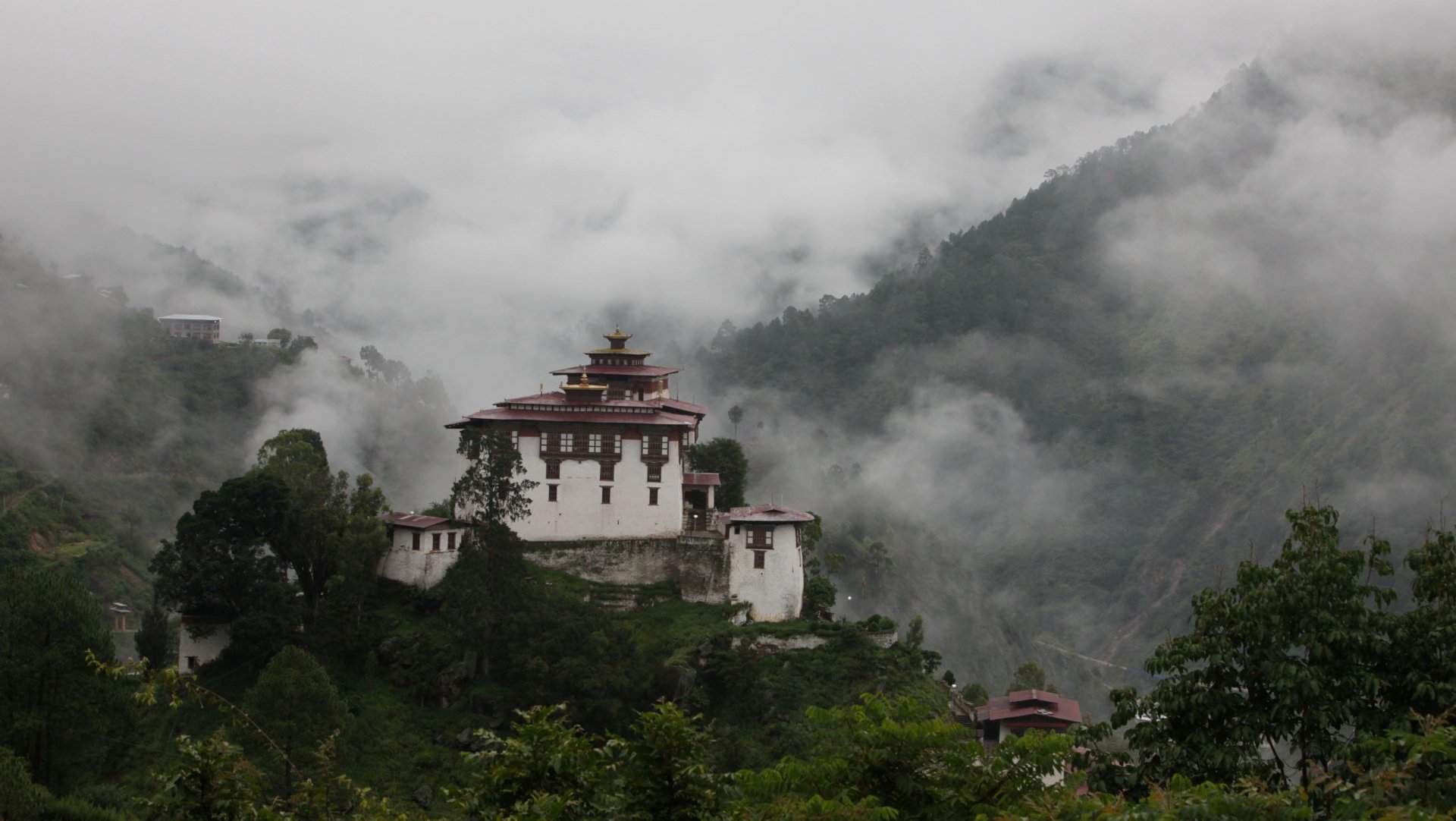
Highlights
- Lhuentse Dzong: Perched on a hilltop overlooking the Kurichu River, Lhuentse Dzong is a majestic fortress with significant historical and religious importance. Built in the 17th century, this dzong serves as the administrative and monastic center of the district. The dzong's strategic location offers panoramic views of the surrounding valleys and mountains.
- Khoma Village: Known for its exquisite handwoven textiles, Khoma Village is a center of traditional Bhutanese weaving. The women of Khoma are renowned for producing intricate and colorful Kishuthara (silk textiles), which are highly prized throughout Bhutan. Visitors can observe the weavers at work and purchase these beautiful handmade items.
- Kurje Lhakhang: Located in the heart of the Bumthang Valley, Kurje Lhakhang is a sacred site where Guru Rinpoche meditated and left his body imprint on a rock. The temple complex consists of three main buildings, each representing different periods of Bhutanese history and spirituality.
- Gangzur Village: Famous for its traditional pottery, Gangzur Village is another cultural highlight in Lhuentse. The local artisans create a variety of earthenware products, including pots, pans, and other household items. Visitors can watch the potters at work and learn about this ancient craft.
- Singye Dzong: For those seeking adventure and spiritual solace, a trek to Singye Dzong is a must. This remote monastery, associated with Guru Rinpoche, is located high in the mountains and requires a challenging trek through rugged terrain. The journey is rewarded with breathtaking views and a profound sense of tranquility.
- Menji Village: Known for its traditional houses and scenic beauty, Menji Village offers a glimpse into rural Bhutanese life. The village is surrounded by lush forests and terraced fields, making it an ideal place for nature walks and cultural exploration.
- Dungkar Nagtshang: The ancestral home of Bhutan's royal family, Dungkar Nagtshang is a historical site of great significance. The house is situated on a hilltop and offers panoramic views of the valley below. It provides insights into the early life and heritage of the Bhutanese monarchy.
Visiting Tips
- Best Time to Visit: The best time to visit Lhuentse is during the spring (March to May) and autumn (September to November) when the weather is mild and the landscapes are at their most beautiful. These seasons also offer clear skies and pleasant temperatures.
- Travel Preparations: Due to its remote location, reaching Lhuentse can be challenging. Ensure you have all necessary travel permits and plan your journey well in advance. Be prepared for long drives and possibly rough road conditions.
- Cultural Etiquette: When visiting religious sites and interacting with locals, dress modestly and behave respectfully. It is customary to remove your shoes before entering temples and to walk clockwise around sacred structures.
- Local Cuisine: Take the opportunity to try local Bhutanese cuisine. Traditional dishes such as Ema Datshi (chili cheese), Phaksha Paa (pork with red chilies), and Jasha Maru (spicy chicken) are commonly enjoyed.
Lhuentse is a destination that offers a rich tapestry of cultural and natural attractions. As one of the must-see destinations in Bhutan, it provides a unique opportunity to explore traditional crafts, ancient monasteries, and breathtaking landscapes. Whether you're interested in the intricate weavings of Khoma Village, the historical significance of Lhuentse Dzong, or the spiritual journey to Singye Dzong, Lhuentse promises an unforgettable experience.
Exploring the Top 10 Places to Visit in Bhutan offers an unparalleled journey through the kingdom's rich cultural heritage, stunning natural landscapes, and deep spiritual sites. From the iconic Paro Taktsang Tiger's Nest Monastery to the serene Phobjikha Valley Gangtey Monastery and the historical Punakha Dzong, each destination provides a unique glimpse into Bhutan's beauty and traditions. Whether you're captivated by the bustling capital of Thimphu, the spiritual heartland of Bumthang Valley, or the tranquil Haa Valley, Bhutan's top tourist attractions promise unforgettable experiences. Discover the magic and mystique of Bhutan with these must-see destinations.
FAQs on Top 10 Places to Visit in Bhutan
Q: What are the top 10 places to visit in Bhutan?
A: The top 10 places to visit in Bhutan are Paro Taktsang (Tiger's Nest Monastery), Punakha Dzong, Thimphu, Bumthang Valley, Phobjikha Valley (Gangtey), Haa Valley, Dochula Pass, Jakar, Paro, and Lhuentse.
Q: What is the best time to visit Bhutan?
A: The best time to visit Bhutan is during the spring (March to May) and autumn (September to November) when the weather is pleasant, and the skies are clear. These seasons are ideal for trekking, sightseeing, and attending festivals.
Q: How do I get to Bhutan?
A: You can fly into Bhutan’s only international airport in Paro from several international cities such as Bangkok, Delhi, and Kathmandu. Alternatively, you can enter Bhutan by road from India through the border towns of Phuentsholing, Gelephu, and Samdrup Jongkhar.
Q: Do I need a visa to visit Bhutan?
A: Yes, all international visitors (except Indian, Bangladeshi, and Maldivian nationals) need a visa to enter Bhutan. Visas are arranged through licensed Bhutanese tour operators, and you must book your trip through one of these operators.
Q: What is the most iconic landmark in Bhutan?
A: The most iconic landmark in Bhutan is the Paro Taktsang (Tiger's Nest Monastery), a cliffside monastery offering stunning views and significant spiritual importance.
Q: Are there any special festivals to experience in Bhutan?
A: Yes, Bhutan hosts several vibrant festivals, known as Tshechus, which feature traditional mask dances and cultural performances. Notable festivals include the Paro Tshechu, Thimphu Tshechu, and Punakha Tshechu.
Q: Can I trek in Bhutan?
A: Yes, Bhutan offers some of the world’s best trekking routes, including the Snowman Trek, Jomolhari Trek, and Druk Path Trek. These treks provide stunning views of the Himalayas, diverse flora and fauna, and a deep immersion into Bhutan’s natural beauty.
Q: What should I wear when visiting temples and monasteries in Bhutan?
A: When visiting religious sites, it is important to dress modestly. Wear long sleeves, long pants or skirts, and remove your shoes before entering temples. Respectful behavior is expected at all times.
Q: Is Bhutan safe for tourists?
A: Yes, Bhutan is considered very safe for tourists. The crime rate is low, and the Bhutanese people are known for their hospitality and kindness.
Q: Can I buy traditional Bhutanese handicrafts?
A: Absolutely! Bhutan is famous for its traditional handicrafts, including handwoven textiles, pottery, and woodwork. Places like Thimphu, Paro, and Bumthang have markets and shops where you can purchase these unique items.
If you are looking for tour packages in Bhutan please click here
If you need any further information, please contact us, Email: at [email protected] , Phone (Whatsapp or Viber) +975-1755-6636
